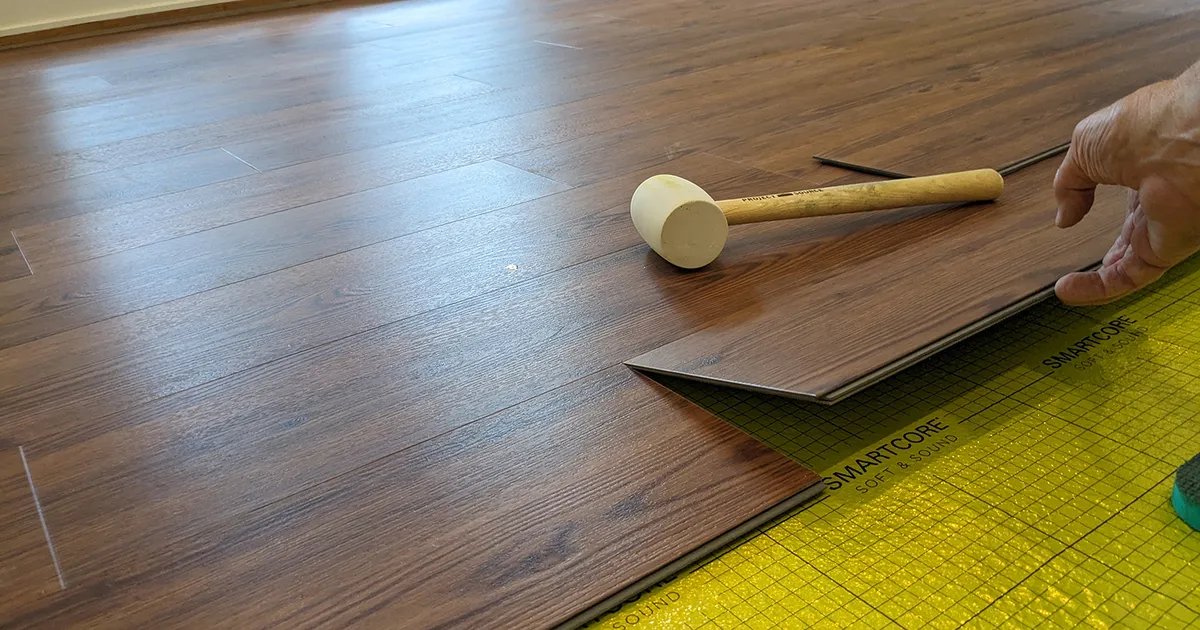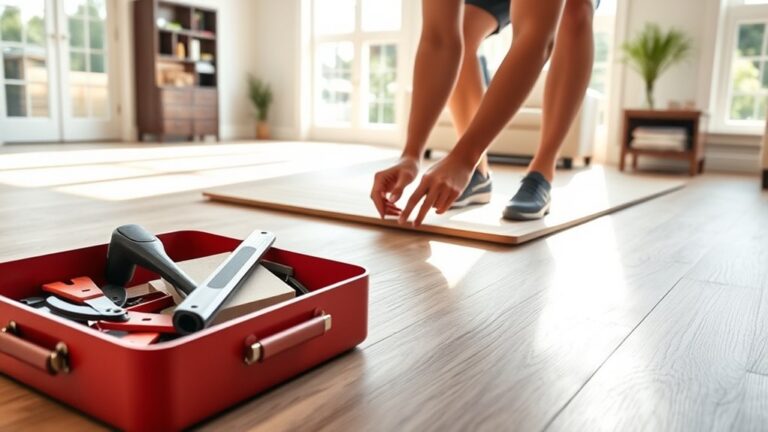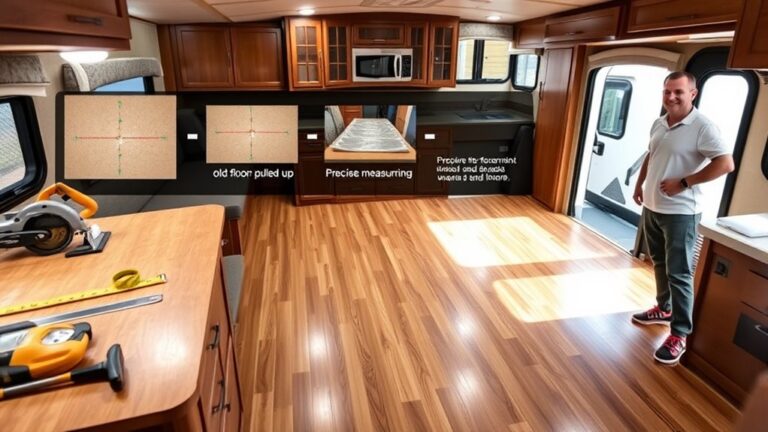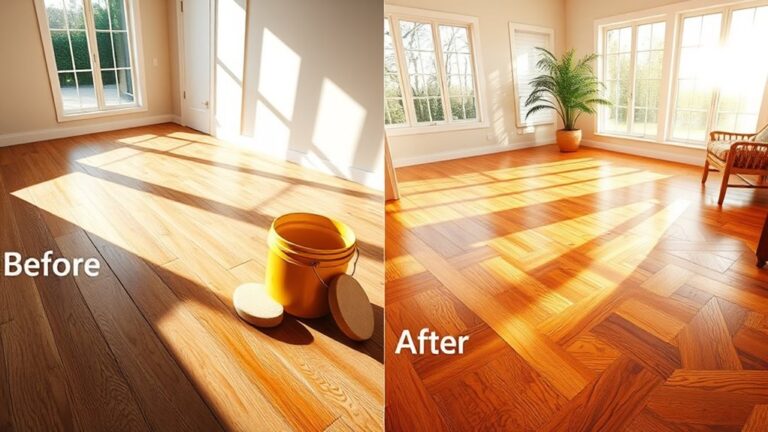Yes, LVP flooring does expand and contract. LVP flooring, also known as luxury vinyl plank flooring, is prone to expansion and contraction due to temperature changes and moisture levels in the environment.
This natural process occurs as the vinyl material absorbs and releases moisture. During hot temperatures, the flooring can expand slightly, and during cold temperatures, it can contract. It’s important to install LVP flooring with the recommended expansion gaps to accommodate these changes and prevent any potential damage or buckling.
Additionally, proper acclimation and installation techniques can help minimize expansion and contraction issues in LVP flooring. Understanding these factors is crucial when considering LVP flooring for your home or commercial space.
Understanding The Dynamic Nature Of Lvp Flooring
LVP flooring, also known as Luxury Vinyl Plank flooring, is becoming increasingly popular in modern homes due to its durability, affordability, and realistic appearance. However, it’s important to understand that LVP flooring is not static – it expands and contracts in response to changes in temperature and humidity levels.
This characteristic of LVP flooring is crucial to consider during the installation process and throughout its lifespan. The expansion and contraction of LVP flooring can lead to gaps or buckling if not properly accounted for. Therefore, it is necessary to acclimate the flooring to the room’s environment before installation and leave proper expansion gaps around the perimeter of the room.
By understanding the dynamic nature of LVP flooring and taking the necessary precautions, homeowners can ensure the longevity and stability of their floors. Whether you are installing LVP flooring for the first time or considering it as a flooring option for your home, it’s essential to be aware of the potential expansion and contraction of this versatile flooring material.
Environmental Factors Affecting Lvp Flooring
The temperature of a room can greatly impact the expansion and contraction of LVP (Luxury Vinyl Plank) flooring. Extreme temperature variations, such as excessively hot or cold conditions, can cause the vinyl planks to expand or contract. When exposed to high temperatures, the planks may expand and buckle, leading to unsightly gaps or ridges. Conversely, in cold temperatures, the planks may contract, causing them to shrink and creating noticeable gaps between the planks.
Humidity levels in a room can also play a significant role in the expansion and contraction of LVP flooring. When the humidity is high, the moisture in the air can seep into the vinyl planks, causing them to swell. This can result in the planks becoming uneven, warping, or buckling. On the other hand, when the humidity is low, the lack of moisture in the air can cause the planks to shrink, leading to gaps between the planks.
Seasonal changes can introduce fluctuations in both temperature and humidity levels. These variations can impact LVP flooring throughout the year. For example, during the summer, when temperatures are high and humidity is increased, the planks may expand. In the winter, when temperatures drop and humidity decreases, the planks may contract. These changes can result in visible gaps or buckling, affecting the overall appearance and integrity of the flooring.
Composition And Construction Of Lvp Flooring
When it comes to LVP flooring, it is important to understand how the composition and construction influence its ability to expand and contract. LVP, or Luxury Vinyl Plank, is a popular flooring option due to its durability and versatility.
LVP flooring is typically made up of several layers, each serving a specific purpose. The top layer, known as the wear layer, provides protection against scratches and stains. Beneath the wear layer is the design layer, which gives the flooring its desired appearance, whether it mimics hardwood or tile.
Beneath the design layer is the core layer, which usually consists of PVC (Polyvinyl Chloride). This layer provides stability and impact resistance. Finally, there is the backing layer, which adds additional support and helps prevent moisture penetration.
The design and structure of LVP flooring also play a role in its expansion and contraction. Manufacturers incorporate various techniques to minimize the effects of temperature and humidity changes. These techniques may include using specific materials, such as composite cores or fiberglass layers, to enhance stability and limit movement.
Overall, understanding the composition and construction of LVP flooring is essential in determining its ability to expand and contract. By selecting the right materials and design, manufacturers can create LVP flooring that withstands environmental fluctuations, ensuring a long-lasting and aesthetically pleasing choice for homeowners.
Installation Best Practices For Minimizing Expansion And Contraction
When installing LVP flooring, it is important to minimize the potential for expansion and contraction. One key practice is to properly acclimate the flooring before installation. This involves allowing the planks to adapt to the room’s temperature and humidity levels for at least 48 hours. Adhesive selection is another crucial aspect, as using the right adhesive can help reduce the effects of expansion and contraction. Make sure to choose an adhesive that is suitable for LVP flooring and compatible with the specific subfloor material. Additionally, it is essential to install the flooring with the correct expansion gap. This gap provides room for the planks to expand and contract without causing damage. Overall, following these best practices will help ensure a successful and long-lasting LVP flooring installation.
Debunking Myths: Lvp Flooring Expansion And Contractions
One common misconception about LVP (Luxury Vinyl Plank) flooring is that it expands and contracts significantly. However, this is not entirely true. LVP flooring does have some movement, but it is minimal and well-controlled.
The role of underlayment is crucial when it comes to minimizing the expansion and contraction of LVP flooring. A high-quality underlayment acts as a buffer between the subfloor and the flooring, reducing the impact of temperature and humidity changes.
Moreover, LVP flooring itself is designed to be stable and resistant to movement. Its rigid core construction prevents excessive expansion and contraction. Additionally, manufacturers often incorporate features like click-lock installation systems that provide further stability.
In conclusion, while LVP flooring may experience some expansion and contraction, it is minimal and manageable. By choosing the right underlayment and following proper installation guidelines, you can ensure the long-term durability and stability of your LVP flooring.

Maintenance Tips To Reduce Lvp Flooring Movement
One of the common concerns with LVP flooring is its tendency to expand and contract. This movement can be minimized with proper maintenance techniques. Cleaning and regular maintenance of LVP flooring are crucial for reducing expansion and contraction. Regular inspections allow for timely repairs to prevent excessive movements. Additionally, it is important to handle sudden temperature changes with caution to minimize flooring issues. When exposed to extreme temperatures, LVP flooring can expand or contract, resulting in gaps or buckling.
Frequently Asked Questions Of Does Lvp Flooring Expand And Contract
Does Lvp Flooring Expand And Contract With Temperature Changes?
Yes, LVP flooring can expand and contract with temperature changes. This is because LVP is made of vinyl, which has a tendency to expand and contract when exposed to hot or cold temperatures. It is important to leave space around the edges of the flooring to allow for this natural movement.
How Does Lvp Flooring Handle Moisture And Water?
LVP flooring is highly resistant to moisture and water. Its durable vinyl construction makes it waterproof, making it a great option for areas prone to spills and humidity, such as kitchens, bathrooms, and basements. However, it’s still important to clean up spills promptly to prevent any potential damage to the subfloor.
Can Lvp Flooring Be Installed In Any Room Of The House?
Yes, LVP flooring can be installed in virtually any room of the house. Its waterproof and durable nature makes it suitable for high-traffic areas like entryways, living rooms, and kitchens. It is also a popular choice for bathrooms and basements due to its resistance to moisture.
However, it’s best to avoid installing it in outdoor or exposed areas.
Conclusion
To summarize, LVP flooring is an excellent choice due to its minimal expansion and contraction abilities. This is thanks to its durable construction and synthetic materials that withstand temperature changes and moisture. By choosing LVP flooring, you can enjoy a beautiful and long-lasting floor that won’t be prone to unsightly gaps or warping.
So go ahead and explore the world of LVP flooring for a stylish and worry-free solution for your home or business.




